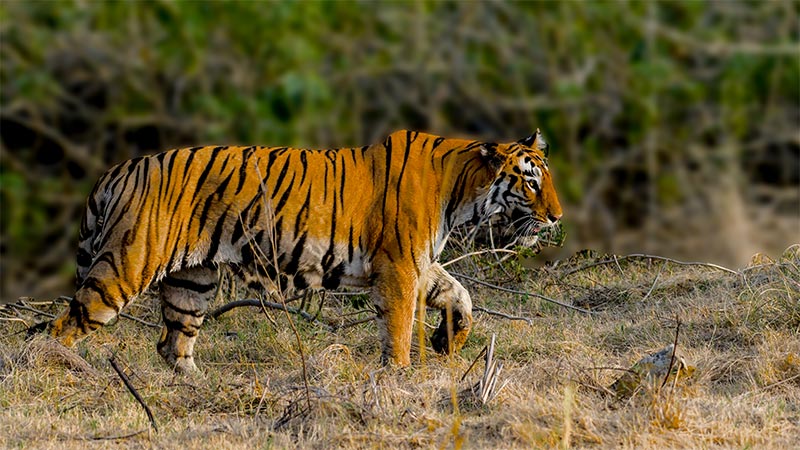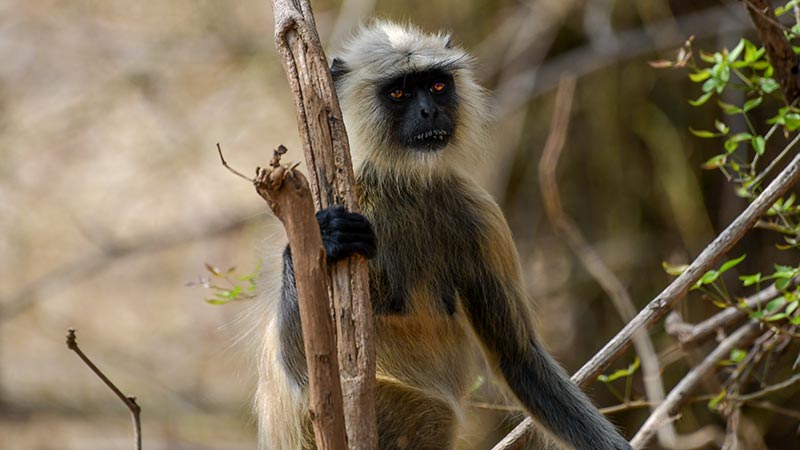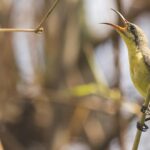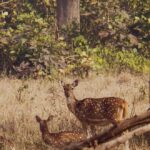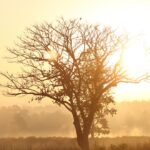Tadoba National Park: Visiting the land of Tigers
Maharashtra has stood tall when it comes to nature’s bliss. The state is truly gifted with enthralling vegetation and wildlife. The state has every piece of nature in it… It is the land of beaches, waterfalls, caves, hill stations, forts, temples, lakes, films, food, people and tigers!
One such majesty of nature on Maharashtra is the finest and largest national park of Maharashtra – Tadoba National Park. This is the oldest and most remarkable national park of the state. The vegetation of Tadoba National Park is alluring and the wildlife is extremely versatile. Let us take a quick trip to get an idea about the richness of the Tadoba National Park.
Geography of Tadoba National Park
The beautiful wild paradise of Tadoba National Park is located in the Chandrapur district of Maharashtra. The oldest national park of Maharashtra is just 150 km away from the popular city of Nagpur. The forest thrives in the hilly area, covering the Chimur Hills along with Moharali&Kolsa ranges covered by Andhari region of Tadoba National Park.
Spread across an area of 1727 sq. km, Tadoba National Park a flawless abode for the endless treasure trove of a large number of species of trees & plants and wildlife living in the park.
The Tadoba National Park is named after the tribal god “Tadoba” or “Taru” who lived in the dense forest of Tadoba National Park and protected it. The legends say that Tadoba was killed in a fierce fight with a tiger. The tribal built a temple to commemorate the great worrier god.
The Andhari region of Tadoba National Park is named after the “Andhari River” that flows through the river and satisfies each being living in the forest.
The climate of Tadoba National Park
Like many other national parks of India, Tadoba National Park experiences tropical climate and thus, the variant temperature throughout the year. The summer months of March to June are scorching hot as the Celsius scales up to 47 Degree Celsius. The winters prevail from the months of November to February and winters in Tadoba National Park are pleasant and lush with a temperature of about 25-35 degree Celsius.
The monsoon is Tadoba National Park is a miracle as it gives the most radiant colour to the park. The monsoon steps in the park by June and prevails until the end of September. It rains quite heavily in Tadoba National Park (approximate 1275 mm. of rain). The monsoon rejuvenates the park and makes it ready for a new beginning.
Best time to visit Tadoba National Park
The national park is open to visitors post rejuvenation by monsoon i.e. from the 15-Oct to 30-June every year for all 7 days of the week. So if you are a lover of the lush greenery of forests then the most ideal months for your trip to Tadoba National Park is going to be the months after the monsoon i.e. in the month of October.
But if you are a fan of wildlife of the forest then the suitable time for your visit is during summers, as most of the animals come out in search of water during the burning heat of summers here. So fix your schedule for the month of May, which is extremely high to savour your eyes with the glimpse of beasts of the jungle.
So the months from February to May are the most enthralling months in Tadoba National Park and as we say, the best time to visit.
How to reach Tadoba National Park?
The mesmerising beauty of the Tadoba National Park allures travellers and wildlife enthusiasts from across the globe. One can easily reach the park using the following modes of transportation, as per one’s personal convenience.
- By air – The nearest airport is the Dr BabasahebAmbedkar International Airport in Nagpur, located just 140 km away from the national park. One can always hire taxis or cabs to reach the Tadoba National Park.
- By rail – If you are an easy-breezy traveller then railway is probably your favourite mode of travelling. The nearest railhead to the park is Chandrapur Railway Station, located just 45kms from the Tadoba National Park. Regular taxis and buses are available for the tourists to reach the national park.
- By road – So you are a fan of road trips? Then you are all set as Tadoba National Park is well-connected by road with major cities. The dense forest area, smooth meadows and deep valleys and on the way, makes the trip delightful and adds charm.
Best places to stay near Tadoba National Park
What is a trip to the jungle without enjoying a stay inside one?
Stay inside Jungle??? Sounds alluring??
There are a lot of options for accommodations which offer a luxury stay amidst the teak forest of Tadoba National Park. Here we mention a few of them:
- Svasara Jungle Lodge
- Serai Tiger Camp
- Irai Safari Retreat
- Tiger Trails Jungle Eco Lodge
Apart from these many budget hotels are available for all you travel freaks! Here we list a few of the accommodations:
Maharastra Tourism Development Corporation hotel (Mohrali)
Forest Development Corporation of Maharashtra guesthouse and dormitory room
Eco huts provided by the Forest Development Corporation of Maharashtra
Flora of Tadoba National Park
One step inside Tadoba National Park and you realize it’s a whole different world full of magic, elegance and wilderness. The lush greenery is the most radiant and mesmerising thing you will ever see. The forest is mainly a Teak and Bamboo forest, but the variety of the deciduous forest would leave you awe-struck.
The park has about 141 species of trees and plants belonging to 58 botanical families.
The major species of trees found in the park are Teak, Bamboo, Arjun, Ain (Crocodile Bark),Bija, Dhaudab, Hald, Salai, Semal, Shisham, Sisoo, Shivan, Surya, Sirus, Tendu, Beheda, Bel, Chichwa, Dhawada, Kusum, Hirda, Karaya Gum, MahuaMadhuca (Crepe Myrtle), LanneaCoramandelica (Wodier Tree) etc.
Take help from your guide to identify AxlewoodAnogeissuslatifolia, guess why? The plant is a fire-resistant species.
Fauna of Tadoba National Park
The park is popular for its amazing tiger density and thus it is called ‘The Land of Tigers.’ Apart from the Royal Bengal Tiger, huge variety of wild beasts can be spotted here which includes – leopard, sloth bear, hyena, jackal, wild dog, sambar, Rusty Spotted Cat, Gaur (Indian Bison), Indian Mouse Deer, Ratel, Wild Pig, Spotted Deer, Flying Squirrel, Four Horned Antelope Blue bulls, Indian Pangolins, Common Langoors, Porcupines etc. The list goes on and on….
The Tadoba National Park is just not all about the beasts but also about the colourful birds. The park is home for no less than 195 bird species and 74 species of butterflies. Isn’t that fascinating?
The list has Orange-headed Thrush, Indian Pitta, Crested Treeswift, Stone Curlew, Crested Honey Buzzard, Paradise Flycatcher, Bronze-winged Jacana, Warblers, Black-naped Blue Flycatcher, Oriental Honey Buzzard, White-eyed Buzzard, Pariah Kite, Eurasian Sparrow Hawk, Black Shouldered Kite, Shikra, Short-toed Snake Eagle, Bonelli’s Eagle, Common Kestrel, Open Bill Stork, Black Ibis, Bar Headed Goose, Black Stork, Lesser Adjutant Stork, Brahminy Duck, Comb Duck, Little Grebe, Grey Heron, Large Egret, Median Egret, Indian Shag, Purple Heron, Banded Bay Cuckoo, White-breasted Water Hen, Green Sandpiper, Wood Sandpiper, Common Sandpiper, River Tern, Painted Sand Grouse, Jungle Bush Quail, Indian Peafowl, Spotted Owlet, and many more.
Safari at Tadoba National Park
The park offers jeep safari to explore the woods of Tadoba National Park. Only 36 Jeeps ply from the entry point in morning and evening, according to the safari timings. Make sure you book your safari in advance as you can’t miss this extraordinary experience of rumbling through the jungle of Tadoba National Park. The chances of spotting a spotting a tiger and other wild animals are relatively high in Tadoba.
Safari Timing:
| Sl. No. | Period | Morning Safari (slot 1) | Morning safari (slot 2) | Evening Safari (slot 1) | Evening Safari (slot 2) |
| 1. | 1st Oct to 30th Nov | 6 AM – 8 AM | 8 AM – 10 AM | 2.30 PM – 4 PM | 4 PM – 6.30 PM |
| 2. | 1st Dec to 28th / 29th Feb | 6.30 AM – 8:30 AM | 9 AM- 11 AM | 2 PM – 4PM | 4 PM – 6 PM |
| 3. | 1st Mar to 30th April | 5.30 AM – 7.30 AM | 8 AM – 10 AM | 3 PM – 5 PM | 4:30PM – 6.30 PM |
| 4. | 1st May – 30th June | 5 AM – 7 AM | 7:30 AM-9.30 AM | 3.30 PM – 5:30 PM | 5 PM- 7 PM |
So make sure you spend your next vacation along with your family or alone (in case you are a solo traveller) by the bank of river Andhari in Tadoba National Park.


